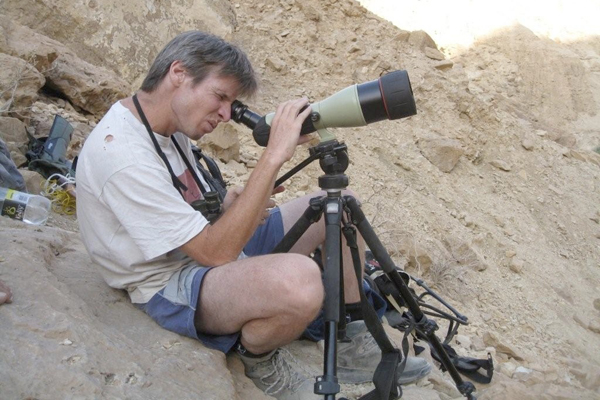Social Networking Animal Style

This ScienceLives article was provided to LiveScience in partnership with the National Science Foundation.
The curiously clannish behavior of the spotted hyena sparked the interest of Amiyaal Ilany — who grew up surrounded by animals his zoologist father brought home to study. Later, the hyena's social behavior would inspire Ilany's research into individual roles in social networks.
Ilany is a postdoctoral fellow at the National Institute for Mathematical and Biological Synthesis, where he investigates the forces that affect changes in social networks. These could be forces such as seasonal change and prey availability, internal rules of network structure, and traits of the clan members. The spotted hyena provides a multitude of data points for Ilany's research, as the animal has the most complex and hierarchical social structure of any carnivore, with clans of up to 100 hyenas led by a single alpha female.
Ilany explores what character traits allow an individual to hold a key role in its social network and whether these traits improve an individual's ability to survive and reproduce. Results of his research may enhance understanding of human social life, shine new light on the evolution of society, and improve our understanding of the lives of other social animals.
Name: Amiyaal Ilany Age: 38 Hometown: Sapir, Israel Field of Study: Behavioral Ecology
What inspired you to choose this field of study?
My father was a zoologist, and our house and backyard were always full of animals, including peacocks, foxes and even a leopard. I was always interested in their behavior.
Get the world’s most fascinating discoveries delivered straight to your inbox.
What is the best piece of advice you ever received?
My father taught me to be patient when observing animals. It always pays off. I was able to record some rare behaviors by staying in the same place and keeping my eye in the telescope.
What was your first scientific experiment as a child?
I tested if our gazelles in the backyard were afraid of a stuffed leopard. I then did a control, using just a piece of cloth.
What is your favorite thing about being a scientist or researcher?
The freedom to ask questions and allocate time and resources to answer them.
What is the most important characteristic a scientist must demonstrate in order to be an effective scientist?
Being innovative. Science is all about new ideas (and the ability to test them).
What are the societal benefits of your research?
I study animal social networks, and I believe they can tell us a lot about our own society. Animal sociality is similar to ours, while simpler to objectively quantify.
Who has had the most influence on your thinking as a researcher?
Professor Amotz Zahavi, who first hypothesized the handicap principle, which suggests that reliable signals must be costly to the signaler, and thus individuals that cannot afford the cost of the signal cannot use it. The classic example is the peacock tail, which makes the peacock more vulnerable to predators, and thus only high-quality males can afford to carry a large tail. I tend to view the world through this principle.
What about your field or being a scientist do you think would surprise people first?
People are always surprised to learn how similar animals are to us.
If you could only rescue one thing from your burning office, what would it be?
My laptop, of course.
What music do you play most often in your office or car?
It varies, but mostly Israeli rock.
Editor's Note: The researchers depicted in ScienceLives articles have been supported by the National Science Foundation, the federal agency charged with funding basic research and education across all fields of science and engineering. Any opinions, findings, and conclusions or recommendations expressed in this material are those of the author and do not necessarily reflect the views of the National Science Foundation. See the ScienceLives archive.



